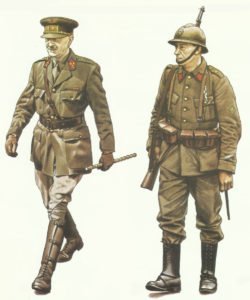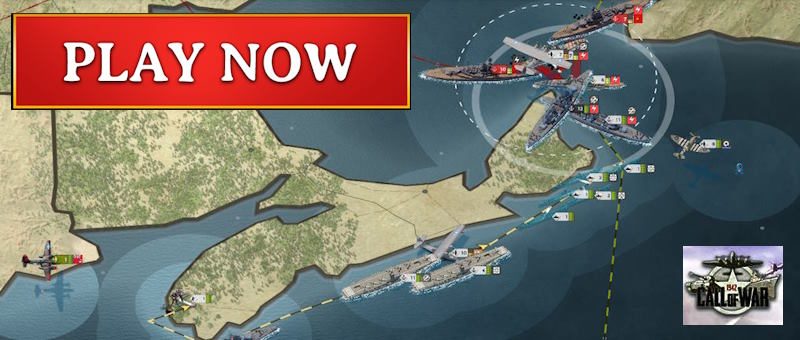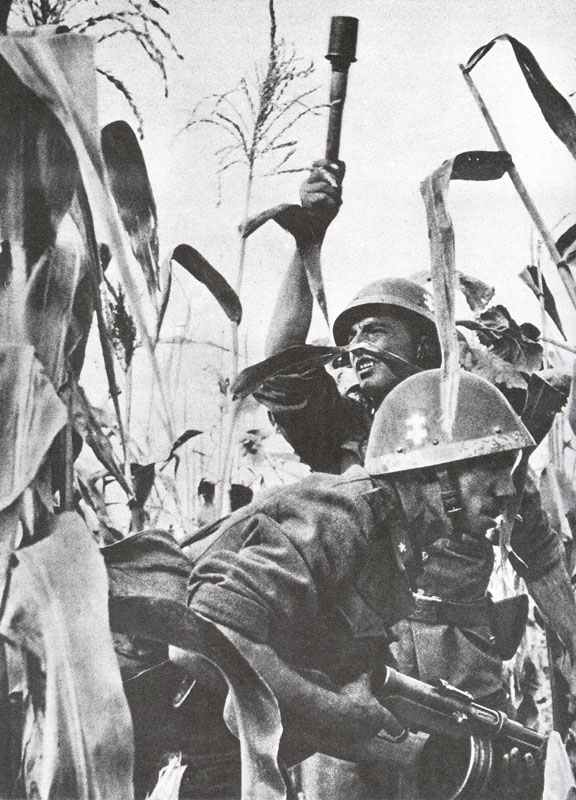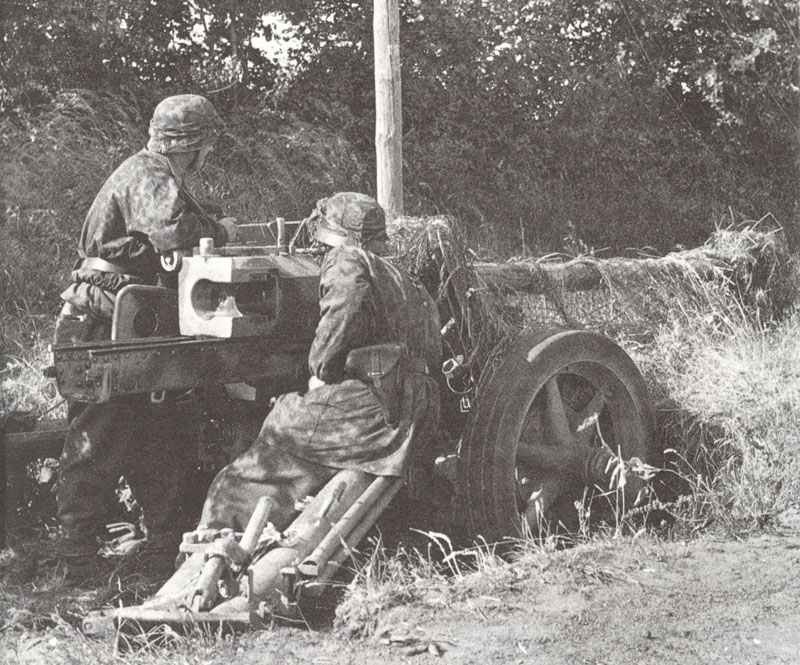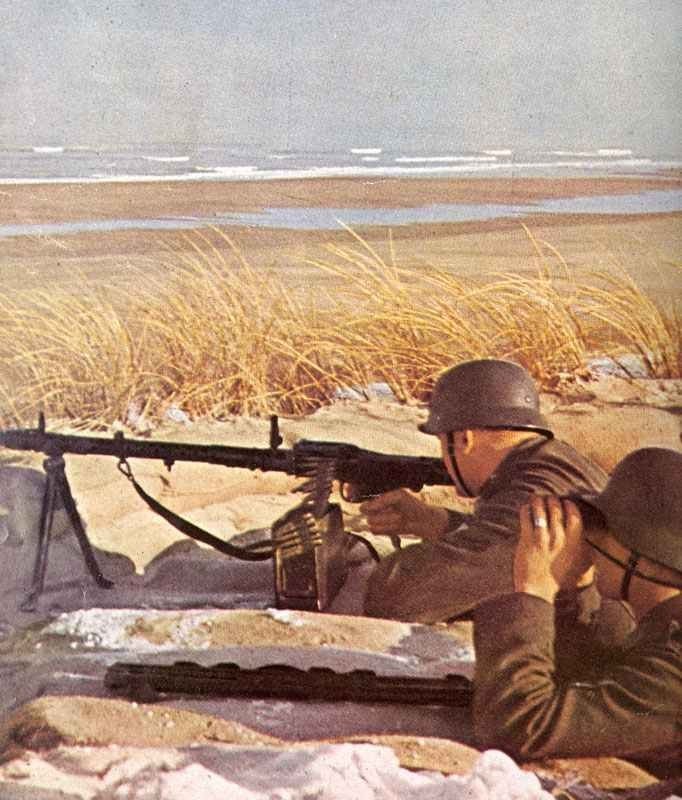The strength and organization of the divisions of the Belgian Army, the planes of the Air Force and its small Navy in 1940.
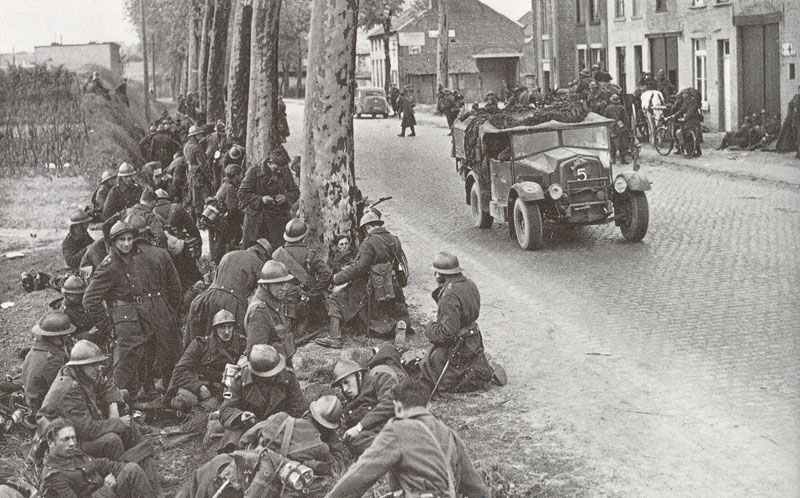
Belgian Army
Table of Contents
Belgium fielded 22 divisions against the invading forces of Army Group B in 1940, and the tenacity of the Belgian infantry at first surprised the Germans. Nonetheless, the Belgian army was on the point of collapse within two weeks of the invasion, and on 28 May the last units surrendered. After 18 days of fighting, casualties were 23,350 killed and wounded.
The 100,000-strong Belgian Army under its Commander-in-Chief, King Leopold, was basically a standing army but one which relied on conscription for its annual intake of recruits. Its strength on mobilization was in the region of 550,000 men, which for a small country of eight million people was a remarkable feat.
The country was divided into three army corps areas based on Brussels, Antwerp and Liege, a cavalry corps in Brussels, an army artillery brigade in Antwerp, the Ardennes Rifle Corps in Namur, as well as three independent frontier bicycle battalions, six infantry divisions, and two cavalry divisions.
The army corps comprised a staff, two infantry divisions, one corps artillery regiment, and one pioneer regiment.
Just before the war there was a rapid attempt to improve mobility and one of the two divisions in the Ardennes Rifle Corps and the two cavalry divisions received motor vehicles. The Motorized Cavalry Corps had a staff, two cavalry divisions, one corps artillery regiment and a bicycle pioneer battalion.
The whole Belgian army had only 42 tanks.
Belgian army divisions 1940:
| Organization | Infantry Division | Cavalry Division |
|---|---|---|
| Total units | 12 + 2 Ardennes Rifles (one motorized) + 4 reserve | 2 + 2 motorized |
| Infantry regiments | 3 (each 3,000 men, armed with Mauser M35 = Kar98k rifles) | 3 of cavalry (regiments of motorized divisions were mixed: 1 battalion of cavalry, 1 battalion of motorcyclists, 1 armored car squadron) |
| Total men | ? | ? |
| Machine guns | 480 (324 light Browning M30, 156 heavy Maxim M08) | ? |
| Mortars | 351 (108 light, 9 heavy mortars or infantry guns) | ? |
| Anti-tank guns | 18 | ? |
| Artillery | approx. 16 (8 Schneider 155mm M17 field howitzers, 4 Schneider 105mm M13 guns, 4 Cockerill 120mm M32 field guns, partly horse drawn and partly motorized) | 16 for motorized divisions (8 Schneider 155mm M17 field howitzers, 4 Schneider 105mm M13 guns, 4 Cockerill 120mm M32 field guns) |
´
Belgian Air Force
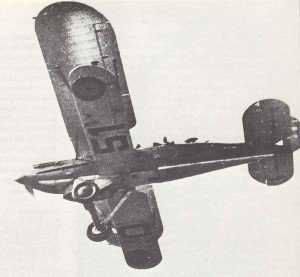
On 1 March 1920 an air force was formed as part of the Belgian Army. From its beginning until the outbreak of war the Air Force was plagued by a shortage of modern aircraft. While developing its own fighter (the Renard R-36), Belgium imported aircraft from England and the USA.
When the Germans invaded only 180 of the 234 aircraft were operational, and most of these were obsolete. All but one of the few modern Hurricanes were destroyed on the ground at Schaffen before the Belgian aircraft could disperse.
In May 1940 the Aeronautique Militaire was grouped together with the Observer Service and Anti-Aircraft Artillery to form the Territorial Air Defense (Defense Aeronautique du Territoire or DAT).
The Belgian Air Force consisted of three regiments: the 1st an observation and Army co-operation unit; the 2nd a fighter regiment, and the 3rd a reconnaissance and bombing regiment. In addition there was one auxiliary regiment with ancillary and refueling companies.
The 1st Air Regiment comprised six squadrons, with a total of 62 serviceable machines. The 2nd air regiment also had six squadrons and totaled 79 aircraft. The 3rd Air Regiment totaled 41 aircraft in four squadrons. Each flying squadron had a complementary anti-aircraft squadron (Escadrille de Parc).
Belgian Navy
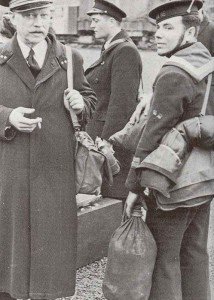
By the end of the 19th century, the Belgian Navy had virtually ceased to exist, and it was not until the end of World War One that attempts were made to re-form it. During the inter-war years this tiny force was once again disbanded because of lack of funds, and it was only on 15 September 1939 that the Marine Corps (later Corps de Marine) was again established.
In November 1939 conscripts with previous naval experience were transferred from the Army to the Corps de Marine which then had a theoretical strength of 30 officers (mainly Army reservists with merchant marine experience), 98 petty officers, and 513 petty officers second class and ratings. These were to provide the personnel for a headquarters and 1st Squadron at Ostende, 2nd Squadron at Zeebrugge, 3rd Squadron at Antwerp, and a replacement and training squadron.
Vessels consisted of small coastal craft (one sloop) armed with one 47mm gun and two machine guns, while other vessels were requisitioned from their civilian owners. Some large wooden trawlers were used as minesweepers.
There were two coastal guns – one in Antwerp and the other in Zeebrugge – which were manned by Army crews.
During the German invasion, the Navy lost about a quarter of its personnel, while a number of survivors found their way to England. By May 1943 the Belgian section of the British Royal Navy had seven ships and about 350 men.
Belgian Forces total:
- 650,000 men (22 divisions), 42 tanks,
- 179 serviceable planes,
- 1 sloop
References and literature
The Armed Forces of World War II (Andrew Mollo)
Krieg der Panzer (Piekalkiewicz)
Luftkrieg (Piekalkiewicz)
World War II – A Statistical Survey (John Ellis)


